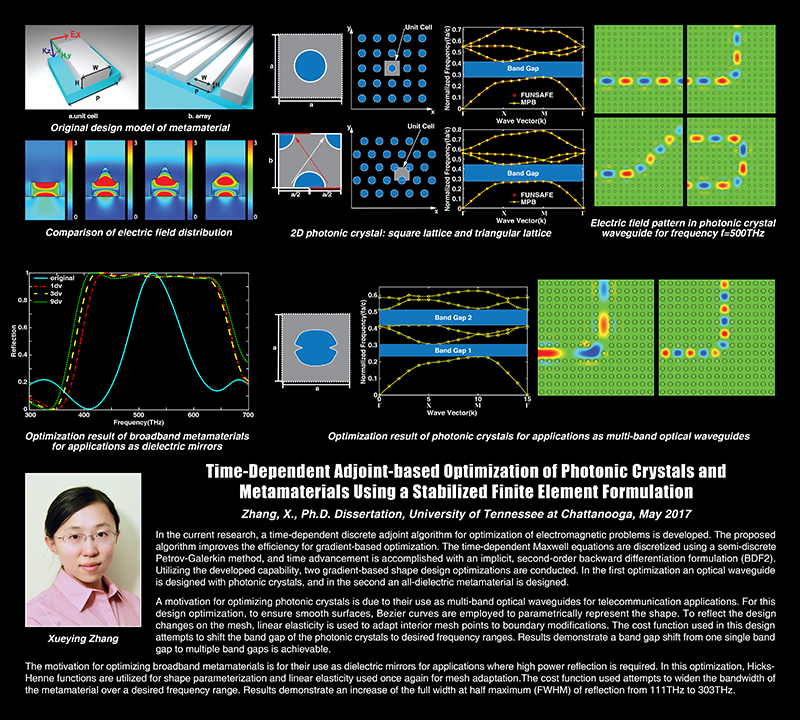Xueying Zhang
Time-dependent adjoint-based optimization of photonic crystals and metamaterials using a stabilized finite element method
A Dissertation Presented for the Doctor of Philosophy in Computational Engineering, The University of Tennessee at Chattanooga
Xueying Zhang, May 2017
Abstract:
In the current research, a time-dependent discrete adjoint algorithm for optimization of electromagnetic problems is developed. The proposed algorithm improves the efficiency for gradient-based optimization. The time-dependent Maxwell equations are discretized using a semi-discrete Petrov-Galerkin method, and time advancement is accomplished with an implicit, second-order backward differentiation formulation (BDF2). Utilizing the developed capability, two gradient-based shape design optimizations are conducted. In the first optimization an optical waveguide is designed with photonic crystals, and in the second an all-dielectric metamaterial is designed. A motivation for optimizing photonic crystals is due to their use as multi-band optical waveguides for telecommunication applications. For this design optimization, to ensure smooth surfaces, Bezier curves are employed to parametrically represent the shape. To reflect the design changes on the mesh, linear elasticity is used to adapt interior mesh points to boundary modifications. The cost function used in this design attempts to shift the band gap of the photonic crystals to desired frequency ranges. Results demonstrate a band gap shift from one single band gap to multiple band gaps is achievable. The motivation for optimizing broadband metamaterials is for their use as dielectric mirrors for applications where high power reflection is required. In this optimization, Hicks-Henne functions are utilized for shape parameterization and linear elasticity used once again for mesh adaptation. The cost function used attempts to widen the bandwidth of the metamaterial over a desired frequency range. Results demonstrate an increase of the full width at half maximum (FWHM) of reflection from 111THz to 303THz.
Click here to access a copy of Xueying's dissertation.
